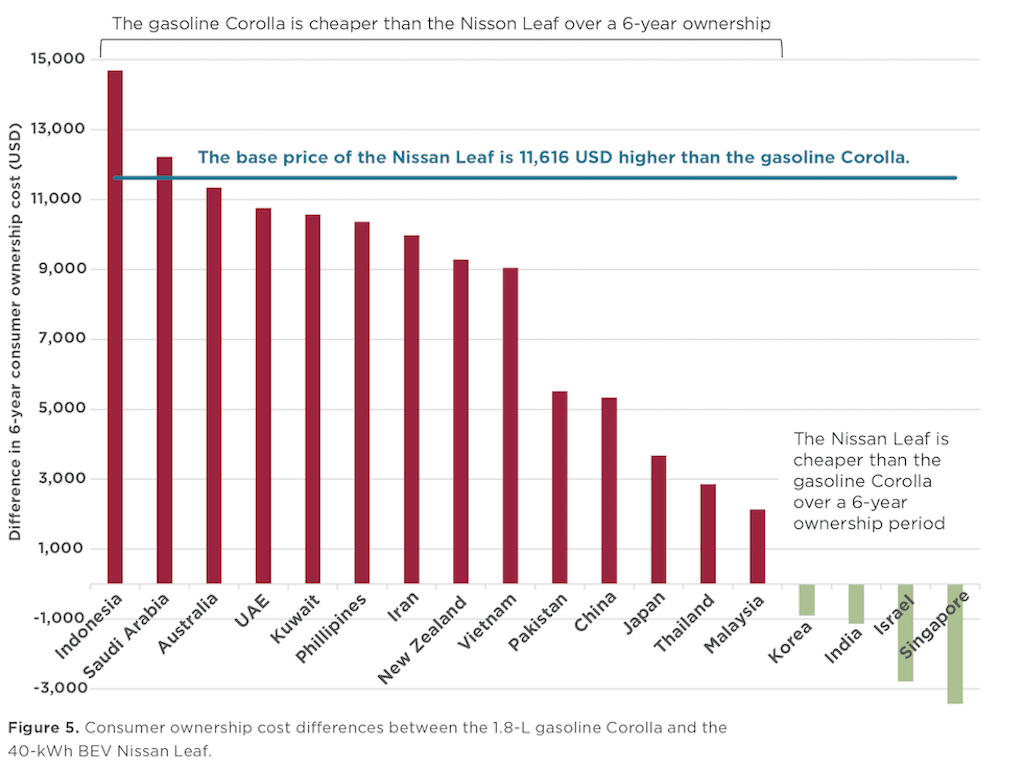Using vehicle taxation policy to lower transport emissions: An overview for passenger cars in Europe
White paper
Overview of Asian and Asia-Pacific passenger vehicle taxation policies and their potential to drive low-emission vehicle purchases
Tax policy can be designed to spur both the deployment of electric vehicles (EVs) and improvements in the fuel efficiency of internal combustion engine (ICE) vehicles. This paper focuses on national-level taxation and subsidy policies for passenger vehicles across 18 Asian and Asia-Pacific countries and compares the consumer ownership costs of a gasoline, a hybrid electric, and a battery electric vehicle in these countries over a 6-year ownership period. The countries analyzed account for 99% of all passenger vehicle sales in Asia and the Asia-Pacific, and this paper identifies the policies and countries that are providing the most significant and effective incentives for more efficient vehicles and EVs.
The authors find that a high one-time tax is usually the main driver of high consumer ownership cost. Reductions in one-time taxes thus carry the greatest potential for creating benefits for efficient vehicles and EVs through tax policy. As shown in the figure below, the tax benefits in four countries effectively reduce the 6-year consumer ownership costs of the battery electric Nissan Leaf compared to the gasoline Toyota Corolla. Singapore and Korea reduce the Leaf’s upfront cost by offering direct subsides, and Israel and India greatly lower the Leaf’s cost through reduction of sales/purchase tax. Additionally, results show that most countries, especially those with high taxation levels, would benefit from changing the current displacement- or weight-based taxes to a continuous fuel efficiency/CO2-based tax based on linear metrics, as this can successfully reduce the consumer ownership cost of more-efficient vehicles. This work could help countries initiate changes to vehicle taxation policies to accelerate the transition toward low-emission vehicle fleets.

